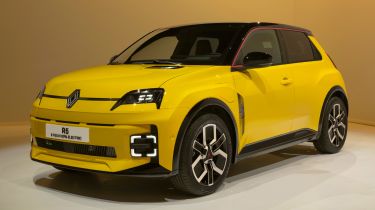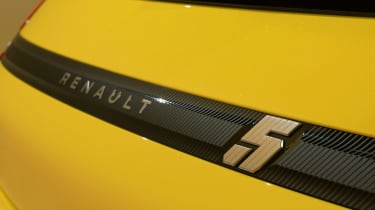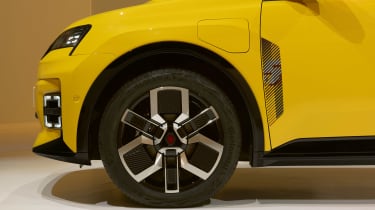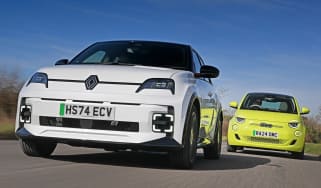New Renault 5 could have a 15-year lifecycle with upgrades every year
Renault is planning a long lifecycle for the Renault 5 with hardware and software improvements introduced on an annual basis
The newly reborn Renault 5 will be evolved on an annual model-year basis and could retain its basic form for a decade or more, instead of a conventional three-year facelift and seven-year life cycle, company bosses have revealed.
The FIAT 500 and MINI Cooper rival, which made its public debut at the 2024 Geneva Motor Show, is being launched with a choice of five colours and a range of accessories, including graphics, that allow greater scope for personalisation. It gets a choice of battery sizes and electric-motor outputs too.
But senior project officials have suggested that upgrades are likely to come thick and fast for the car – not only in more obvious areas such as colour and trim, but also beneath the surface.
The first update could even be introduced before the first deliveries of the car reach the UK, in the shape of steering wheel-mounted paddles that allow different levels of brake-energy regeneration to be selected, including a mode that facilitates single-pedal driving around town.
Laurent Leprieur, the 5’s project lead, told us, “We plan to launch other colours already. For 2025 we’ll have two more colours, including one ‘pop’ colour [like the green and yellow of the launch versions].
“But over time, we’ll also work to improve the efficiency, the price – maybe a new battery technology,” he added. “LFP chemistry [cheaper but less energy dense than the 5’s planned NMC tech] is one thing we could look for there, as an example.
“We plan to launch just a few months after the start of the sale, a one-pedal offering. It will have four regen braking levels and then the fifth one will be full stop, ‘single-pedal’ mode. We have in mind to see how we can propose this system for customers who buy the first version without it, because it’s mainly hardware.”
Renault’s boss, Luca de Meo, even hinted that this focus on under-the-skin optimisation could give the 5 a long life, like that enjoyed by the combustion-engined 500, which was introduced back in 2007 and only facelifted in 2016. “We’re not going to keep the 5 the same for seven years,” he said, “but it’s an iconic product; so we don’t want to change the design. We can change a few colours, maybe. The structure of the thing will stay the same for a long time – maybe 10, 12 even 15 years - like 500 did. But you can change everything inside.”
De Meo added that we should expect lessons learned on the forthcoming Renault 4, and particularly the even cheaper Twingo that’s due in 2026, to help make the 5 more affordable. “As we go along, if I find out I need one semiconductor instead of two, or one chip instead of two, I’m going to take it out,” he said. “All the things that we learn on the Twingo, we will roll back into 5 and 4. So you can expect 5 and 4 to come down in price. We’ve already learned things [from the Twingo project] that are relevant not just for the 5, but also for the other platform – so Megane, Scenic and so forth,”
Senior project officials have revealed some of the 5’s construction secrets, meanwhile, designed to help keep its starting price down to around £25,000 and allow an unusually short development period, between concept and start of production, of three years. The 5’s platform makes extensive use of Clio and Captur parts and geometry up front, and the design of multi-link back axle – necessary because a cheaper torsion beam would have forced a longer wheelbase to accommodate the larger of the two battery packs – relies heavily on proven parts from the four-wheel-drive Dacia Duster.
Now read the latest news from the 2024 Geneva Motor Show...
Find a car with the experts








